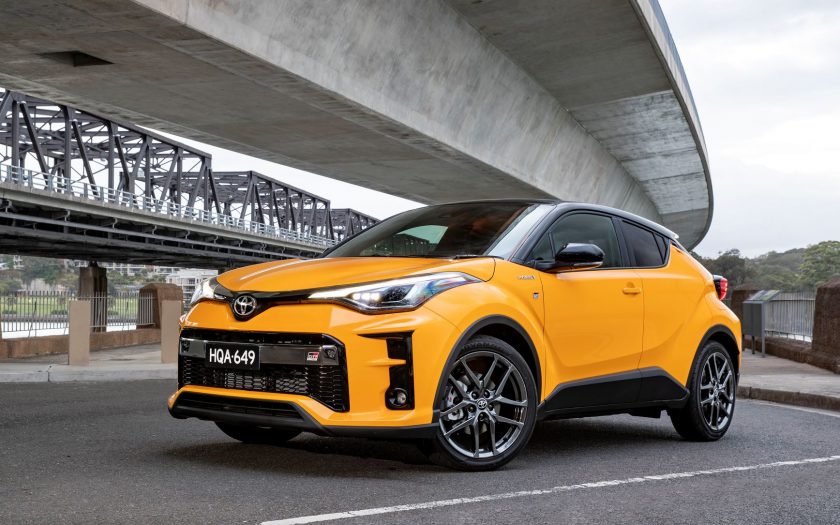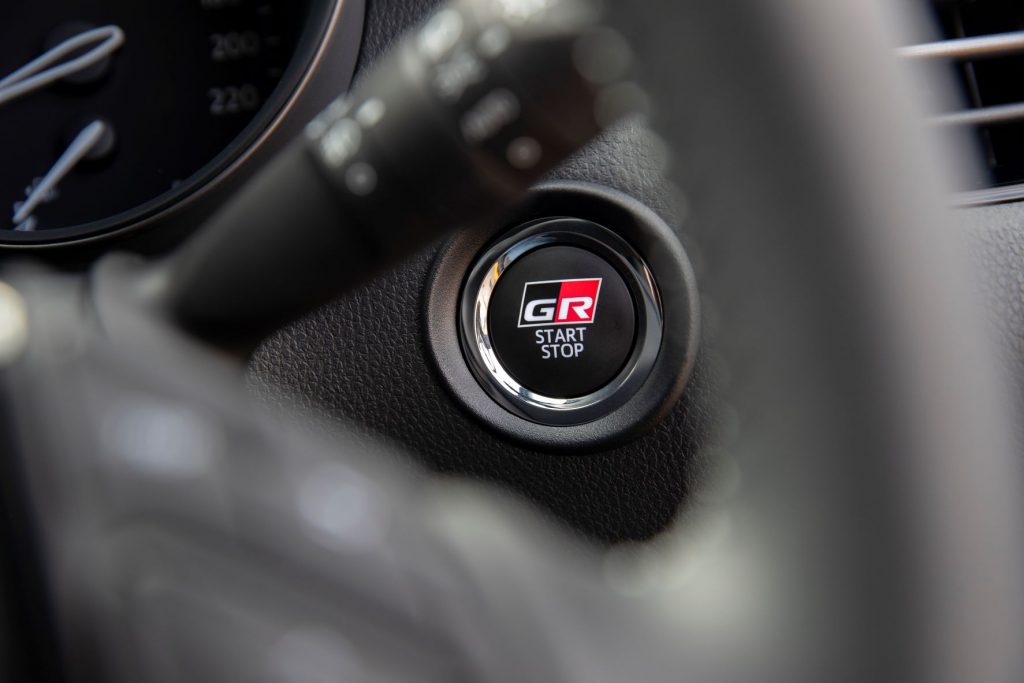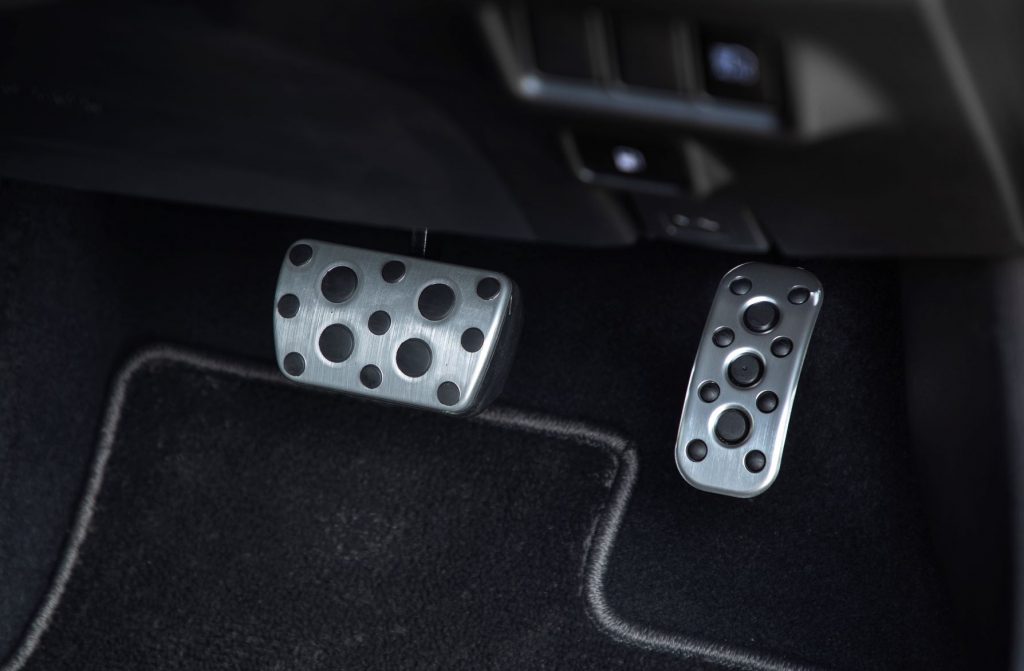Chris Riley tests the 2022 Toyota C-HR GR Sport with pricing, specs, ride and handling, safety, verdict and everything the over-50 driver needs to know.
Summary: The so-called “sporty” C-HR misses out on a lot of the goodies that you get in the Koba. We’re not sure it deserves to wear the GR badging, especially since it’s more about show than go.
2022 Toyota C-HR GR Sport
Pricing: $37,665 (plus on road costs)
Two-tone paint (black roof): $450
Warranty: Five-years, unlimited km
Safety: 5-star ANCAP (2017)
Engine: 1.8-litre naturally aspirated 4-cylinder petrol engine, plus electric motor
Power: 72kW at 5200rpm (petrol engine) plus 53kW (electric motor). Combined output 90kW
Torque: 142Nm at 3600rpm (petrol engine) plus 163Nm (electric motor)
Transmission: CVT automatic, front-wheel drive
Body: 4395mm (long); 1795mm (wide); 1550mm (high)
Weight: 1460kg
Towing capacity: 600kg (braked and unbraked)
Wheels: 19-inch alloy
Tyres: 225/45R19
Ground clearance: 137mm
Turning circle: 11.0m
Fuel tank: 43 litres
Thirst: 4.3L/100km (unleaded 91 RON)
Consumption on test: 4.7L/100km (600km)
seniordriveraus consumption on test: not tested
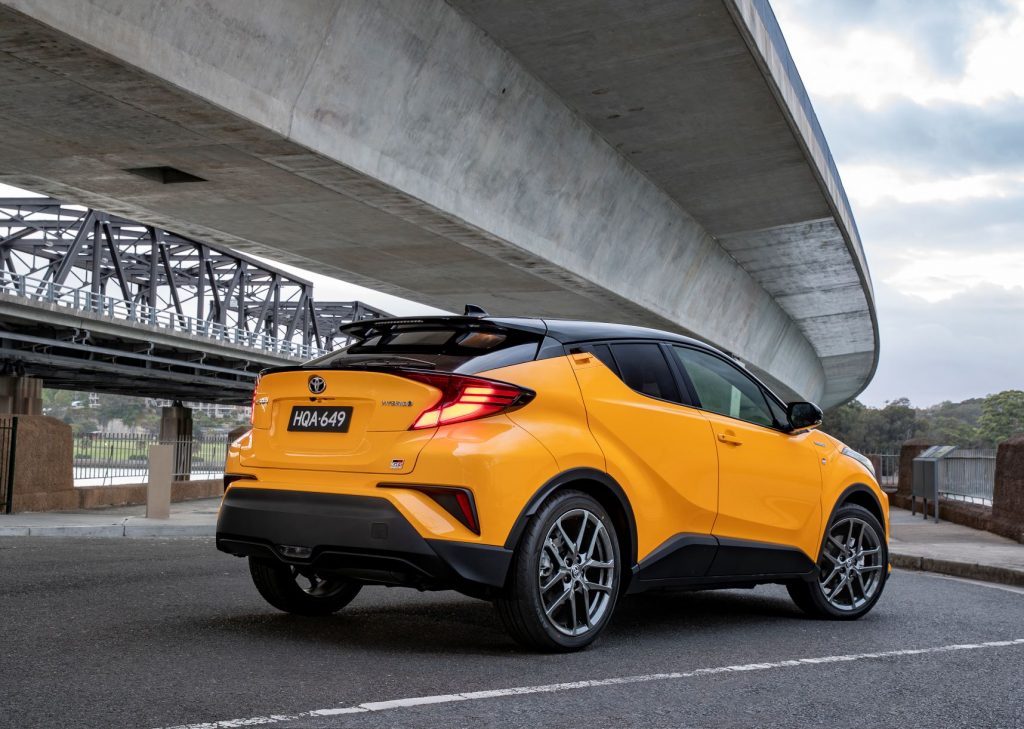
[review]
Some people loathe the dramatic looks of the Toyota C-HR.
Personally, I really like design and have done since day one.
I can’t say the same for the Nissan Juke, its most direct competitor – a truly ugly attempt to be different.
So, I was mildly excited to hear there was now a GR version, the C-HR GR Sport – inspired by Toyota’s performance-focused GR models.
The key word here is “inspired”, because there’s extra power on offer and that is disappointing – you might feel differently.
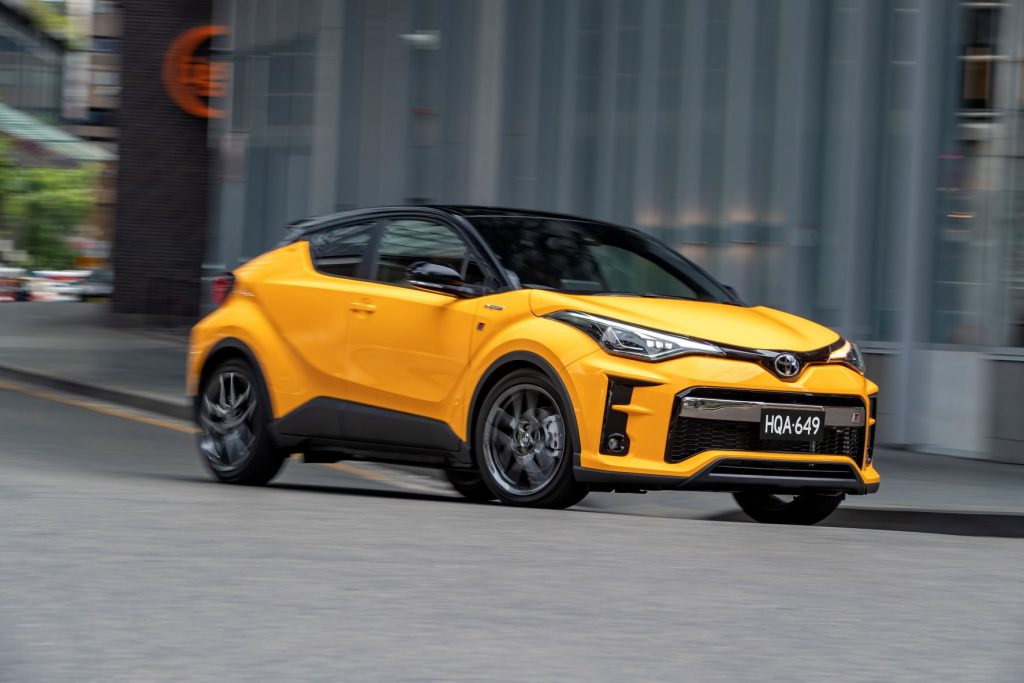
What’s it cost?
A rationalised line-up now boasts three models, with a choice of two drivetrains and either front- or all-wheel drive.
Entry GXL is priced from $30,915 plus on-roads, comes with a 1.2-litre four-cylinder turbocharged petrol engine, 7-speed CVT style transmission and front- or all-wheel drive.
Next is Koba, priced from $35,165, available with the 1.2-litre turbo or a 1.8-litre based hybrid – both with the 7-speed CVT.
The hybrid is in fact the same setup that can be found in the renowned Prius, as well as Corolla, Corolla Cross and Lexus CT hatch too.
Pick the 1.2-litre turbo and you get a choice of front- or all-wheel drive. Select the hybrid, however – and it’s front-wheel drive only.
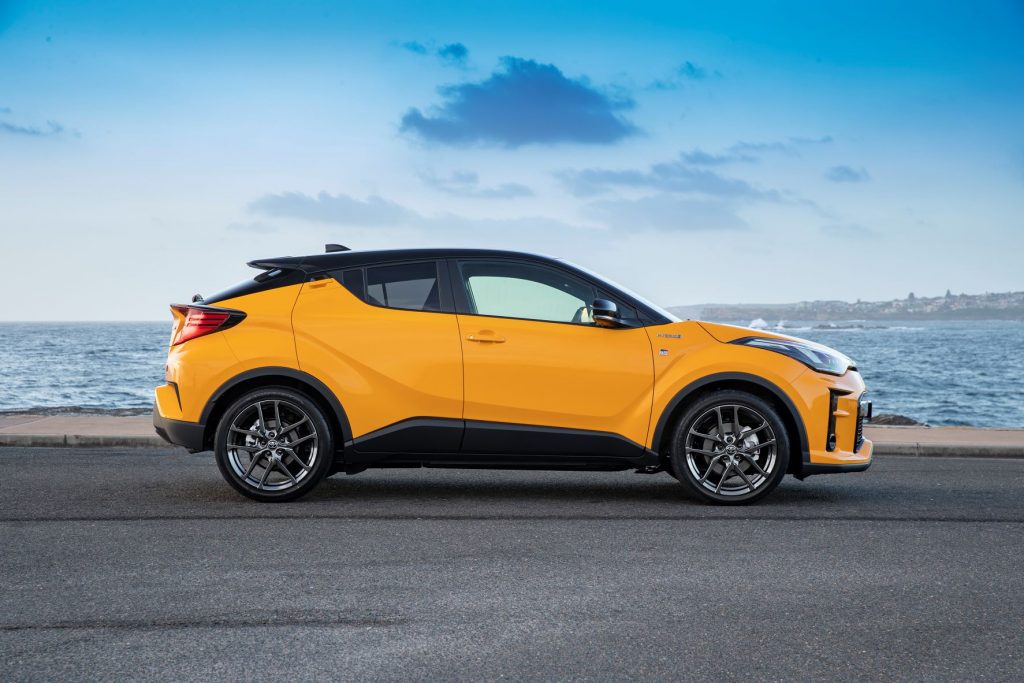
Then it’s on to the main event. Based on the GXL front-wheel drive hybrid, GR Sport is priced from $37,665 plus on-roads and comes only as a hybrid and only in front-wheel drive form.
The thing is, even though the GR Sport sits at the top of the tree – it doesn’t get the whole kit and caboodle.
While it comes with a bunch of sporty bits and bobs, at the same time it misses out on some of the features that come with Koba.
GR Sport features a more aggressive, blunter front bumper and grille, with an aerodynamic lip, a bold lower grille, thick horizontal bar and revised fog light surrounds that sit lower than the standard model.
Sporty bits include larger 19-inch dark alloys with 225/45 series rubber, LED lighting front and rear, piano black finish for the rear lip spoiler, plus mirror caps and door garnishes.
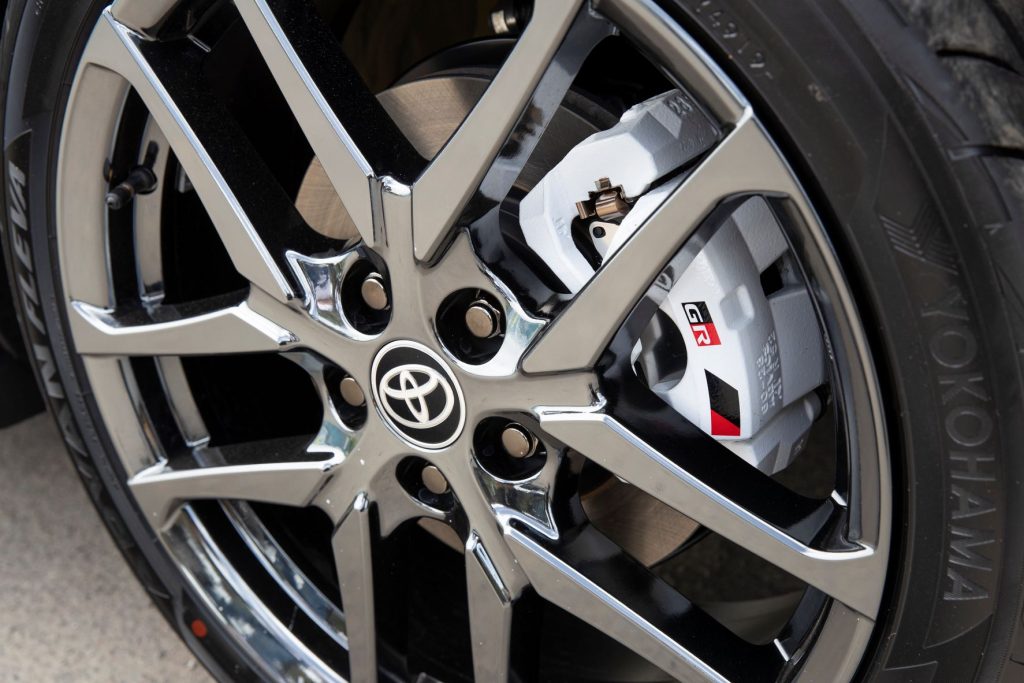
Completing the look are white brake callipers with the GR logo and GR badging at the front, side, and rear.
Standard kit includes satnav, dual-zone climate air, adaptive cruise, keyless smart entry and star, auto-dimming rear-view mirror, auto LED lights and wipers, electronic parking brake and a 4.2-inch colour driver display.
An 8.0-inch touchscreen fronts a six-speaker audio system, with AM/FM radio, Bluetooth, voice recognition, wired Apple CarPlay and Android Auto – but no DAB+.
A comprehensive five-star safety package encompasses seven airbags, a rear-view camera and Forward Collision Warning, Brake Assist and Autonomous Emergency Braking.
There’s also Lane Trace Assist, Auto High Beam, All-Speed Active Cruise Control and Pre-Collision Safety system with pedestrian detection, as well as Blind Spot Monitor, Road Sign recognition and Rear Cross Traffic Alert.
The latter misses out on auto braking and there’s no overhead parking monitor either – both of which come with Koba.
GR Sport also dips out on power driver lumbar adjustment, heated front seats and Nanoe Air Conditioning Technology.
Nanoe what? The latter is designed to send moisture-rich ions into the cabin to reduce odours, pollen and other allergens.
It also reduces the dryness associated with standard air conditioning systems.
GR Sport is available in five colours, with the $450 option of a black roof with Crystal Pearl, Hornet Yellow or Feverish Red.
Capped price servicing is $220 per service with 12-month/15,000km intervals.
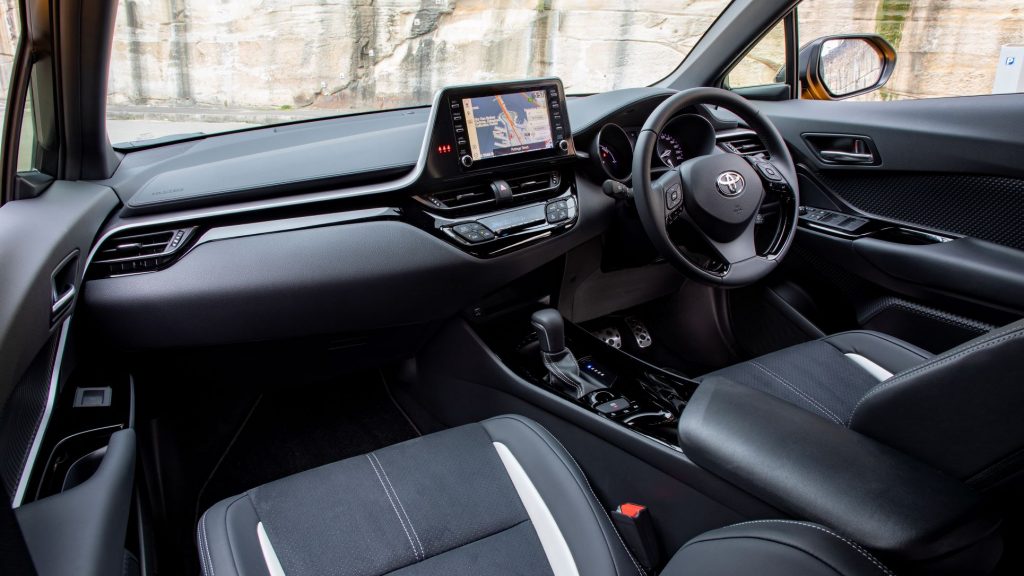
What’s it go like?
A GR Supra or Yaris it is not.
GR Sport is quite clearly more about show than go.
It rides on larger flashier 19-inch alloys, with 225/45R19 Yokohamas, and 15mm lower sports suspension and sits 12mm closer to the ground.
Shock absorbers, spring rates and stabiliser bars have all been tweaked to reduce pitch and body roll, in the name of better handling.
A new centre brace has also been added to strengthen body rigidity and contributes to more direct steering response.
There’s some talk of GR brakes, but apart from white calipers, no further information is offered, suggesting they are otherwise standard.
The sporty makeover continues inside with body-hugging, black leather-look sports seats and a leather-wrapped steering wheel.
There are also dark silver highlights around the instrument panel and door garnishes, piano black surrounds for the centre console and power-window switches, along with a GR-branded start button.
A diamond motif is repeated throughout the cabin, visible on the roof lining, overhead switches and interior light.
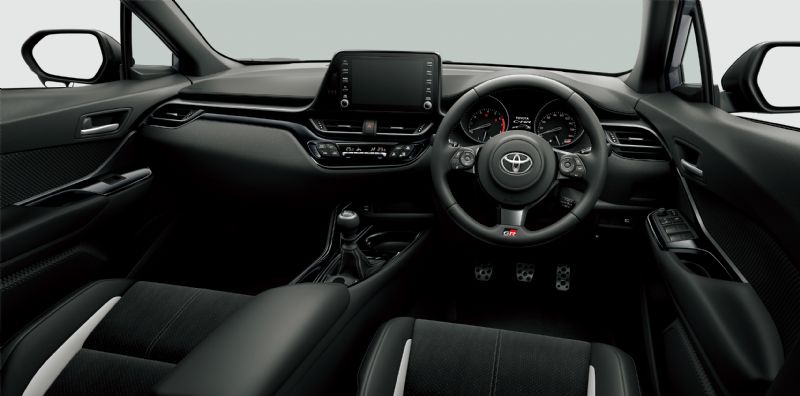
The dash features a pair of traditional analogue dials flanking a small central information panel and while they are clear and easy to read – the dials lack the digital pyrotechnics of competitors.
Satnav fires up quickly and is easy to use, apart from the predictive text – but it has an annoying habit of commandeering the centre information panel where the digital speed is normally displayed.
Cancelling a destination is also difficult.
With large rear pillars and a plunging roof line, the design leads to a back seat that is claustrophobic, offers limited legroom and does not have air outlets for passengers.
The hidden rear door handles are also difficult to use from some angles.
A small boot space hides a space saver spare.
All in all, the car looks amazing with its gleaming paintwork.
It would all be terrific if it just had more power to go with the more purposeful looks – more chutzpah to push through corners, requiring better handling and stopping power.
But the fact of the matter is that it doesn’t, therefore the handling enhancements are somewhat superfluous.
What’s more, the type of person who buys this car is unlikely to be a boy racer and is hardly about to push the limits.
The hybrid powertrain consists of a naturally aspirated 1.8-litre engine, with 72kW and 142Nm, teamed with an electric motor that puts 53kW and 163Nm.
With a combined power output of 90kW, no mention of torque and an undisclosed kerb weight, performance is, at best, average.
The CVT does not provide “steps” or simulated gears like it does in petrol models, with drive and reverse settings plus B for engine braking.
For the most part, however, it behaves itself, hiding the zoominess that usually marks CVTs.
Ride and handling are great, but the steering feels rubbery and the drive experience is far from engaging.
We have a long, steep hill in our neck of the woods that tends to sort the wheat from the chaff.
You need a run up and it wasn’t kind to the C-HR.
Under hard acceleration, it became quite harsh and noisy and the CVT went into overdrive, sounding like a lawnmower about to run out of petrol.
On a more positive note, fuel consumption is rated at a measly 4.3L/100km.
We were getting 4.7 after more than 600km behind the wheel.
What we like
- Looks great
- Superb paint job
- Superior ride quality
- Excellent fuel economy
What we don’t like
- No extra power
- No manual option
- Rubbery steering
- Average audio
- No DAB+ digital radio
- No front parking sensors
- No wireless charging
- Hidden rear door handles a pain
- Small boot
Things over-50s need to know
I keep wanting to like this car.
But let’s cut to the chase. There’s not much GR-ness, not much to get excited about – certainly no extra power.
Frankly, I think for $37,165, the Koba 1.2-litre turbo with all-wheel drive offers a sportier package and you can spend the $500 you save on two-tone paint.
Trust me, you won’t miss the sports suspension.
I see a surprising number of older drivers getting around in the C-HR.
Maybe it’s the price or the styling that attracts them, either way it’s a fairly user-friendly beast.
The size makes it easy to park and drive, the raised ride height that comes with an SUV makes entry and exit easy and, being a hybrid, it uses very little fuel.
But be warned, with more than 60 accessories available to enhance your purchase – you’re liable to end up spending more than you had planned.
Come on Toyota, let’s have a real GR C-HR?
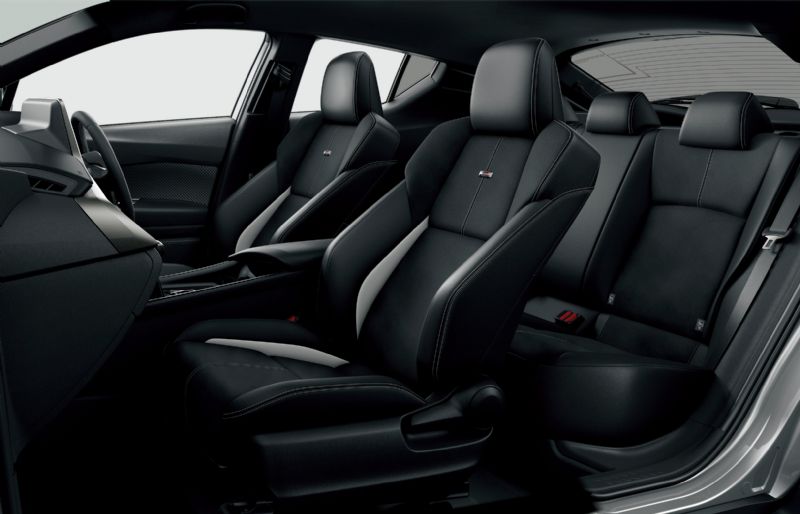 seniordriver comments
seniordriver comments
It’s something of a cynical exercise to brand the C-HR as a GR. And as many car companies have learnt to their cost, it is remarkably difficult to create equity in a brand, and even more remarkably easy to drag it down.
Putting the GR brand on a car that doesn’t deliver what it promises is a sure-fire way to dilute what most enthusiasts see as a desirable product.
And it’s hard to understand why the model at the top of the range (the GR Sport) misses out on some of the features that are standard on the Koba, such as autonomous emergency braking and overhead parking monitor. Another disappointment is the lack of transparency about the brakes. Chris comments that, other than getting white calipers, as far as he can tell, they are otherwise standard. We’re sorry to state the obvious here, but brakes are about performance, not appearance. Or they should be.
We’re also not fans of fussy design that over-rides practicality. Those hidden rear door handles would be less fiddly to use if they were a more traditional design.
We’d like to comment further, but as we have to keep telling you, Toyota have not been able (or willing) to provide seniordriveraus with a press car to drive, test and evaluate (although we’re still trying). In the meantime, we’ll just have trust Chris’s judgement. And in our experience, he’s usually right on the money.
